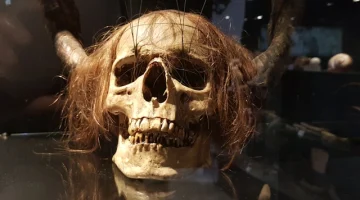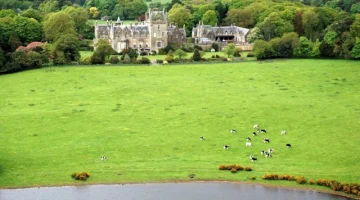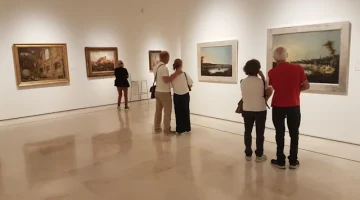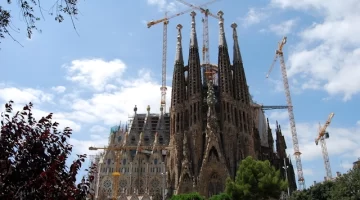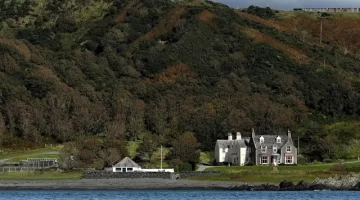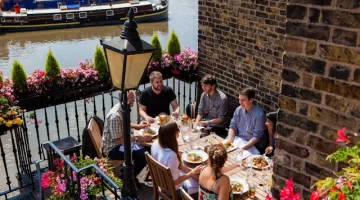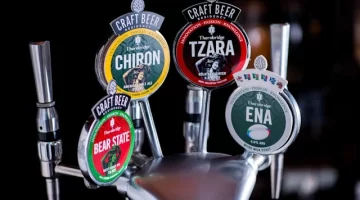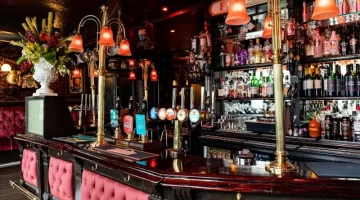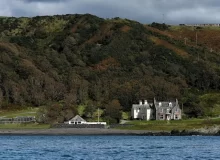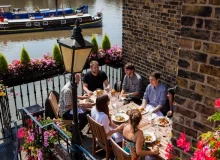Arles
The Travel Pages visits Arles in Provence and discovers one of the best markets in the region, Roman remains, and the story of Van Gogh in Arles.

History of Arles
Located on the banks of the Rhône at the mouth of the huge delta, Arles was an important Roman colony and became the capital of Gaul towards the end of the Roman period. As a major port, it rivalled Marseille right up to the 19th century, when it was eclipsed by the railroads.

Van Gogh in Arles
It might have languished as a depressed industrial town but for the arrival of one man, the artist Vincent Van Gogh, in 1888. He was actually on his way to Marseille but a snowstorm halted his train at Arles and he stayed. For more information see our Van Gogh in Arles page.
Although he spent only 16 months in Arles, it was a prolific period for him and he produced over 300 paintings, including some of his most famous pictures like The Bedroom and Starry Night over the Rhône. There is a walking trail linking Van Gogh sites, and you can also book a guided tour through the Tourist Office.

Picasso in Arles
It was because of his interest in Van Gogh, and in the bullfighting that takes place in the Roman Amphitheatre, that Pablo Picasso visited Arles many times. You can see photographs of his visits at the Musée Reattu, which was once the studio of the Arles-born artist, Jacques Réattu.
Arles Market
The best time to visit Arles is on Saturday morning, when a huge market stretches along three boulevards: Boulevard des Lices, Boulevard Georges Clemenceau, and Boulevard Emile Combes. This is a real Provençal market, one of best you’ll find.
Along with stalls selling soap, bright Provençal textiles, lavender, herbs and colourful pottery, you can get your computer repaired, buy a harness for your horse, have your horoscope read, or your hair done in a mobile hairdresser van. There’s also a small flea market.
But mostly it’s food: huge peppers and tomatoes, round courgettes, mounds of onions and strings of garlic, scented honey, tapenades, sprawling spice stalls, olives, cheese, fish, meat, and sausages. Musicians stroll through the market like medieval minstrels, stopping to play beside cafe tables. Don’t miss it – but get there early, as the traders start packing up around noon.

Roman Arles
You’ll come across Roman remains everywhere in Arles. In the southeast corner of the city centre, a quiet place to stroll, you can see parts of the old Roman walls along Montee Vauban and the Porte de la Redoute city gateway.

Near the river are the ruins of huge Roman baths, the Thermes de Constantin. Columns from a Roman temple are set into a corner of the Grand Hôtel Nord Pinus in the place du Forum. The Theâtre Antique d’Arles is still used for the festival of theatre and dance in July.

Roman Amphitheatre
The main attraction, though, is the impressive Roman amphitheatre, Les Arènes, which dominates the town centre. Built towards the end of the 1st century AD, it once had three storeys and seated 20,000 spectators, who came to see gladiator contests and games.

In the Middle Ages it was turned into a fortress, and the arena contained 200 houses and two churches. These were removed in the mid-19th century, but three of the four watchtowers remain. Today the arena is used for bullfights, and can be visited at other times.
Advantage Monuments Pass
If you’re planning to visit several attractions, you can buy a Monuments Pass at the tourist office which is very good value, covers six monuments and three museums, and is valid for six months.
Advantage Monuments Pass
If you’re planning to visit several attractions, you can buy a Monuments Pass at the tourist office which is very good value, covers six monuments and three museums, and is valid for six months.
Cathédrale St-Trophime

Though it dates back to the Dark Ages, the present cathedral in the place de la République was built in the late 11th and early 12th centuries. Its portal and facade boasts some of the finest Romanesque stone carving in Provence, with striking portrayals of saints, angels and scenes from the Last Judgement.
Inside, there are Aubusson tapestries in the nave and 4th-century sarcophagi, one depicting the crossing of the Red Sea which is used as a chapel altar. There is more expressive stone carving in the lovely cloisters.
Musée Reattu

Most people visit this riverside museum for the whimsical series of drawings donated by Picasso, in which he explores such themes as the harlequin and the musketeers. There is also a portrait of his mother, and photographs of Picasso in Arles by leading photographers.
The eclectic offerings elsewhere in this mansion range from 18th-century paintings by the museum’s founder Jacques Réattu, who lived here, to contemporary photography and sculptures, some of which decorate the balconies and courtyard beneath the gothic gargoyles overhead.
museereattu.arles.fr

More Information on Arles
The Arles Tourist Office is at 9 Boulevard des Lices (tel: 04 90 18 41 20) and open daily.
More Information on Arles
The Arles Tourist Office is at 9 Boulevard des Lices (tel: 04 90 18 41 20) and open daily.














